Isometric neck exercise: Health Benefits, How to do?
What is isometric neck exercise?
Isometric neck exercise is the best exercise you can do at Home when you have neck pain related pathology such as slip disc at cervical region, cervical spondylosis. Physiotherapist are mostly prescribed you this exercise when you have acute pain and you have not allowed to do resistive neck movement, then this exercise is recommended.
- Isometric neck exercises are useful for contractions of a neck muscles or muscles group.
- While isometric exercises, the muscle does not change its length and the affected joint does not move.
- Isometric neck exercises help to maintain the strength of neck muscles. the therapist also recommended strengthening exercises with isometric neck exercises.
- As older age our neck muscles and ligaments become less supplemented. isometric exercise helps to prevent rupture or sprains.
- If you have to prevent poor posture, injury of the neck, degenerative changes of bones, then this exercise absolutely helps you.
- It will also reduce the risk of future injury of the neck and improve physical endurance.
- In isometric neck exercise, your surroundings joints are not moved only tension created in a particular muscle which we need to strengthen.
- This exercise does not lengthen or shorten the muscle.
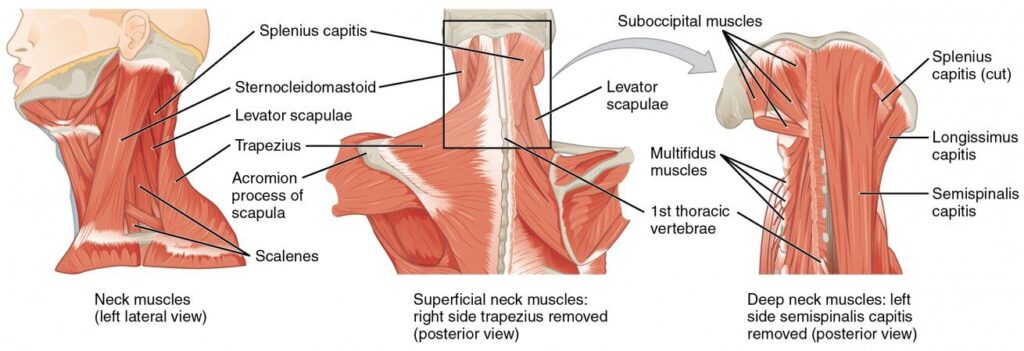
Which muscle involve in isometric neck exercise?
Following are the neck muscles are used during isometric neck exercise.
| Neck Muscles | Action | Nerve Supply |
| Sternocleidomastoid | Extension& | |
| rotation of neck, | C2, C3 | |
| flexion of vertebral column | ||
| Scalenus | Flexion & rotation of neck& | Lower cervical |
| side flexion | ||
| Spinalis Cervicis | Extension & rotation of neck | Middle/lower cervical |
| Spinalis Capitus | Extension & rotation of neck | Middle/lower cervical |
There have many Health benefits by doing isometric neck exercise:
- Help to reduce pain in whiplash injuries of the neck
- Helps to reduce the severity of chronic upper back pain.
- Your doctor may advise performing some of these exercises after a motor vehicle accident or lower back injury.
- Helps to release tension in the neck
- Helps to reduce tightness and stiffness. They can reduce pain and
- Help to increase flexibility
- Help to prevent neck and cervical spine injuries also
- Easy to perform
- Helpful exercises for activating muscle fibers at one time.
- Effective exercise for lower blood pressure.
- Cervical spondylosis, Cervical radiculopathy.
The isometric neck exercise you can do while sitting, standing, or lying on your back:
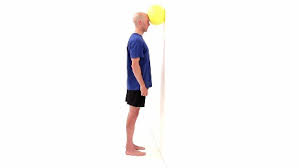
Isometric neck exercise in standing position:
For this exercise, you need a medium size ball and you have to stand near the wall side.
Neck flexion
- You have to stand straight with an upright posture, with your forehead resting on a ball against the wall.by your forehead, you have to gently press the ball towards the wall.
- Hold this for 5 to 10 seconds.
- Your back should be straight throughout the movement.
Neck extension
- You have to stand straight with an upright posture, with the back of your head resting on a ball against the wall.by your head, you have to gently press the ball towards the wall.
- Hold this for 5 to 10 seconds.
- Your back should be straight throughout the movement.
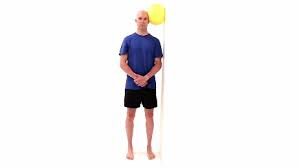
Neck Side flexion
- You have to stand straight with an upright posture, with the left side of your headrest on a ball against the wall.
- Gently press the ball by the left side of your head towards the wall.
- Hold this for 5 to 10 seconds.
- Your back should be straight throughout the movement.do this on another side also.
Isometric neck exercise in Sitting position:
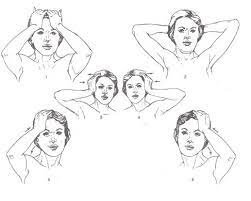
For sitting exercise, you need one chair or table. you have to sit with an upright posture in a chair. in this position, you will do all neck movements explain below or if you want to do this exercise in standing then you have to stand with hip and shoulder-width apart with the torso straight.
Neck flexion
- Put your hand on your forehead then slightly push your neck in a forward direction, your hand remains in the same position you give little pressure against the movements like pushing the backside.
- Hold this for 5 to 10 seconds.
Neck extension
- Put your hand on the back of the head then slightly push your neck backward direction, your hand remains in the same position you give little pressure against the movements like pushing forward side.
- Hold this for 5 to 10 seconds.
Neck Side flexion
- Put your hand left side of your head with your head straight and chin in a neutral position, now bring your head towards the left side shoulder by pushing your hand by the head.
- Hold this for 5 to 10 seconds.
- Repeat this for right-side neck flexion.
Neck Rotation
- Put your right hand on the left side of your chin and turn your head slightly towards the left side by pushing your hand try to look behind you.
- Hold this for 5 to 10 seconds.
- Repeat this on the right side by using the left hand.
Isometric neck exercise in Supine lying position:
For this exercise, you have to lie down on your back over a plinth or mattress by using a small pillow or rolled towel under your head, your hand by your side.
Neck flexion
- For this exercise you have to lie on your tummy pillow use under your head you have to push the pillow by your forehead and hold it for 5 to 10 seconds.
Neck extension
- For this exercise, you have to lie down on your back over a plinth or mattress by using a small pillow or rolled towel under your head, your hand by your side .
- Push the pillow by the back of your head, and hold this for 5 to 10 seconds.
Neck side flexion
- For this exercise, you have to lie on any left side.
- Take a pillow under your head now push the pillow by you towards the plinth.
- Hold this for 5 to 10 seconds.
- Do this on the right side.
Isometric neck exercises video
When you should not to do this exercise?
- If you feel any pain during exercise.
- If you had a neck injury occurs recently.
- If your doctor advised for rest.
- If you have a head injury.
- If your symptoms worsens after exercise
- If you have a high blood pressure, and you have difficulty in holding a breath.
Avoid this mistakes while performing isometric neck exercise:
- Do not move your shoulder or trunk while performing this exercise.
- Do not give too much pressure to your head.
- Keep straight your neck while performing this exercise.
Isometric neck exercises images
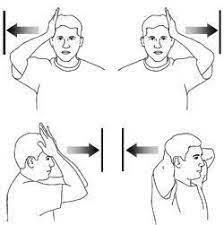

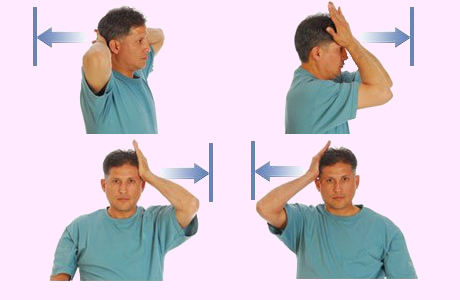

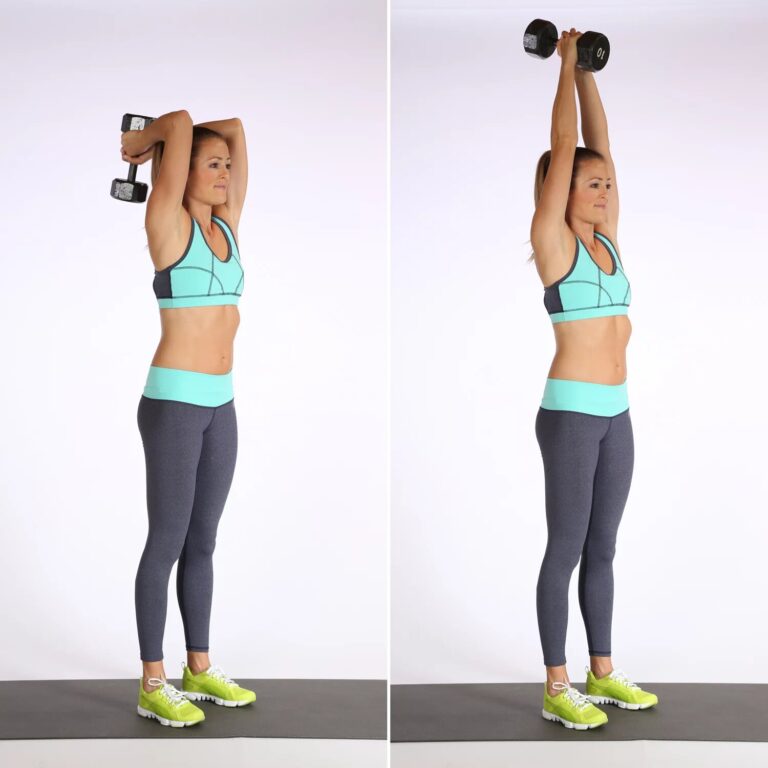



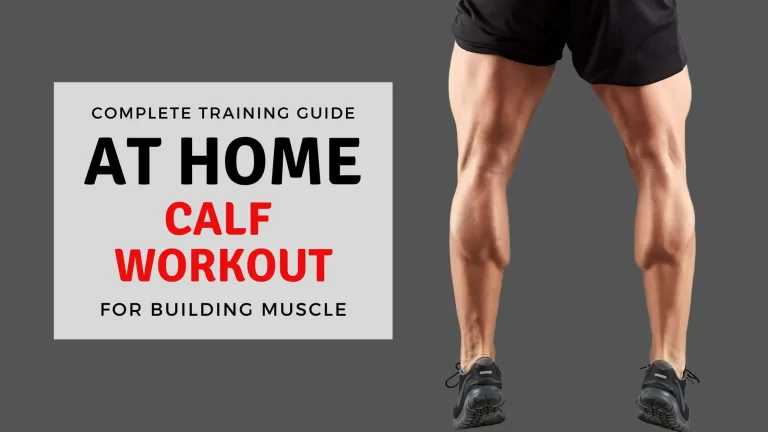
7 Comments